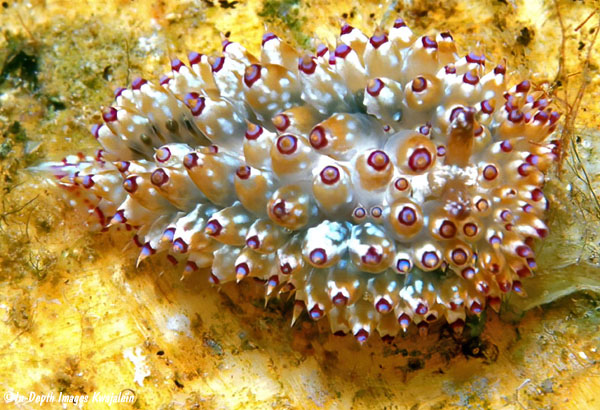
This species of Janolus was very common, but only at one spot we know of in the Marshalls. We never saw it anywhere else, but on the pilings of an old pier on the island of Medren at Enewetak Atoll, one person could count as many as 40 or even more specimens over the course of a 90-minute dive. The pier was a relatively old one and its steel pilings were covered with a thick growth of encrusting organisms, including sponges and bryozoans. Janolus could be found at depths of about 2 to 10 meters and appeared to be eating a foliose bryozoan that was abundant in the encrusting growth. A variety of other opisthobranchs also lived on the pier pilings, so we went back there often. Our first foray there was in July of 1981, but in July of 1982 a summer storm generated large swells that entered Enewetak lagoon through the wide southwest passage. The swells happened to destroy our old wooden rickety pier at Enewetak Island, as well as a couple of boats belonging to some contractor personnel who were overseeing an atoll replanting project. Medren's sturdy pier came through the large swells intact, but all the opisthobranchs were washed off the pilings. For several months, we saw virtually nothing on the pilings, but by the beginning of 1983, the nudibranchs were back in force. Over the following year, we never saw quite the numbers of Janolus that we could see before the storm, but it was obvious they were coming back.
Most specimens ranged in length from 10 to 30mm. This species resembles most closely resembles Janolus tricellariodes from the Philippines and other Western Pacific sites (figured in Gosliner et al (2018). as Janolus sp. 8). I suspect ours are variations of that species, but the Enewetak specimens differ externally in having more white pigment, typically a narrow bluish band above the maroon-purple band on the cerata, and more orange on the cerata tips.

The pier pilings also supported dense growth of various algae species, including the Caulerpa surrounding the Janolus below. The finely branching tan bryozoan to the right of the nudibranch is apparently the sole food source for this nudibranch.
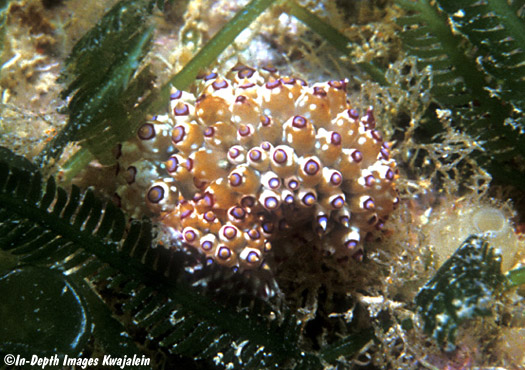
Below, a pair of animals with some of their prey bryozoan directly below them.
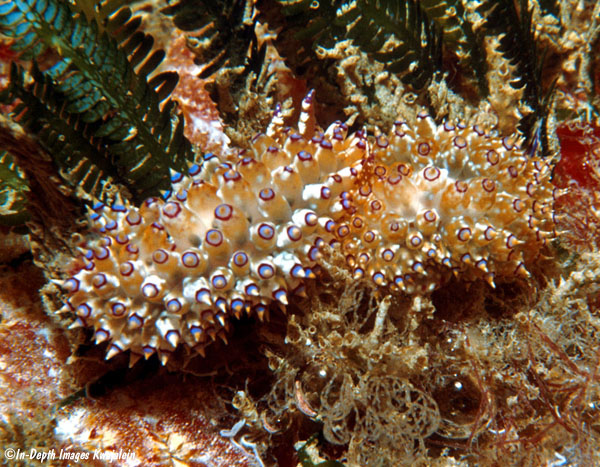
Crawling across pink encrusting sponge on the pier piling.
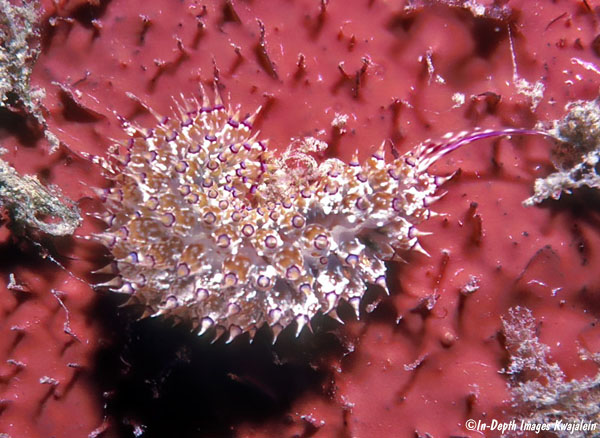
The next photo shows a pair of nudibranchs mating.
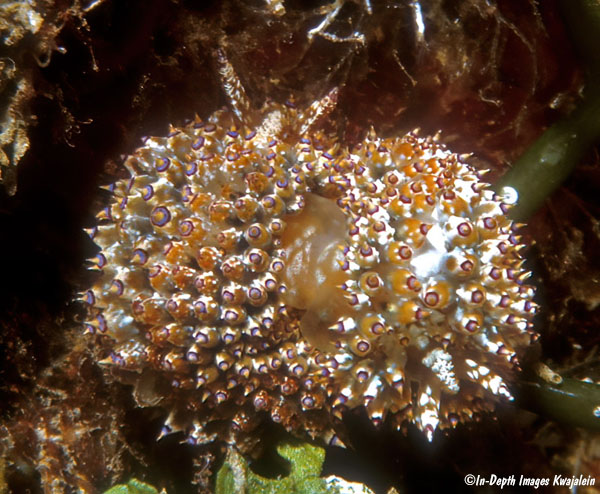
Created 20 January 2007
Updated 9 November 2021